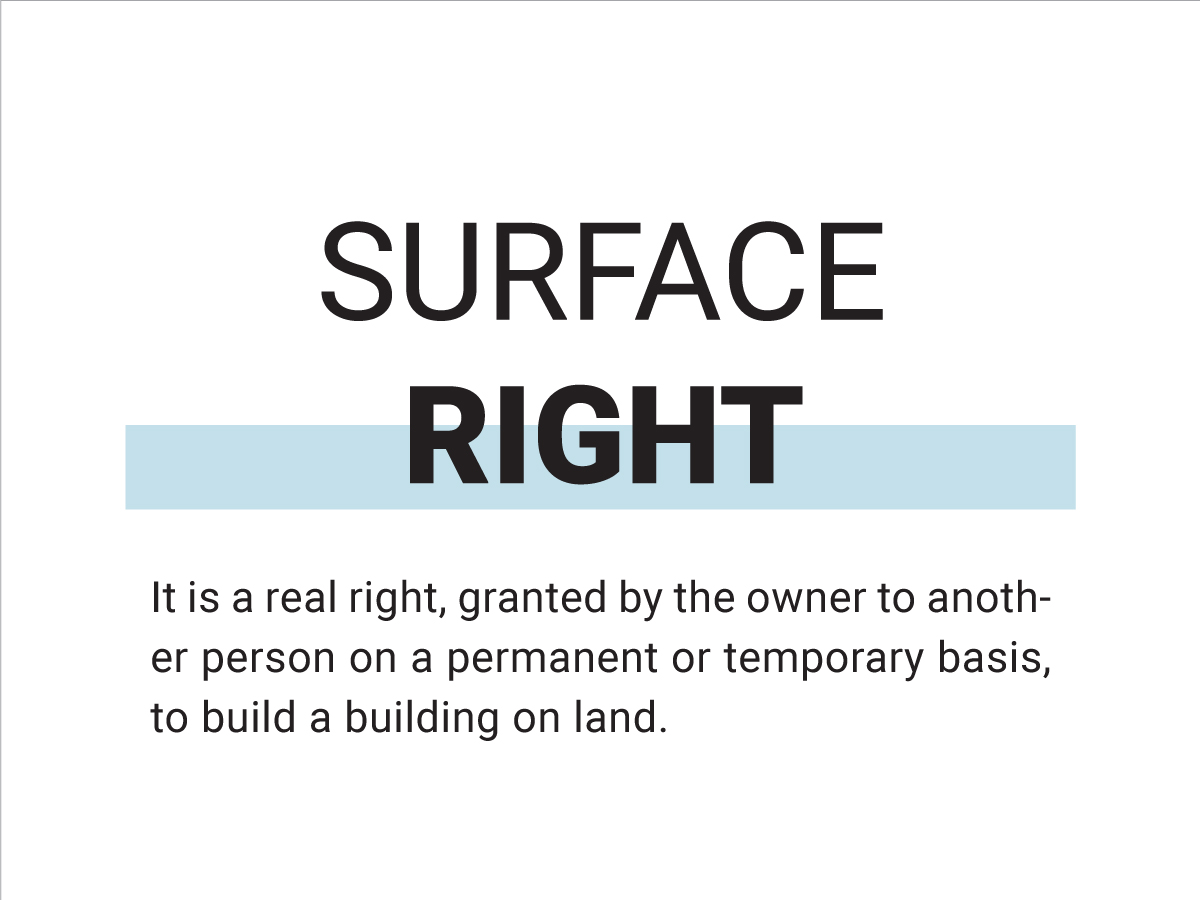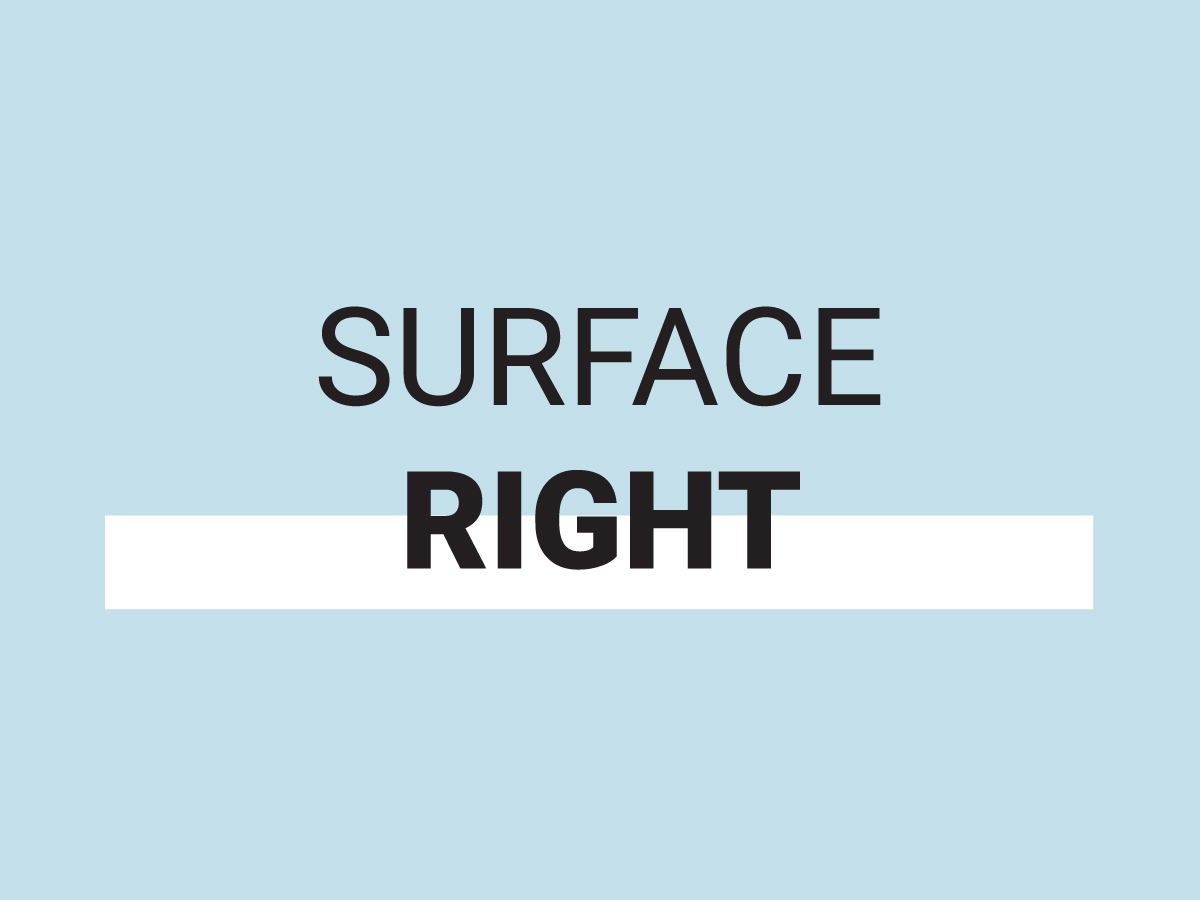It is a real right, granted by the owner to another person on a permanent or temporary basis, to build a building on land.
In other words, a perpetual or temporary right is granted to construct or maintain a structure on someone else’s land, or to plant or maintain crops on it.
Unlike usufruct, which consists of the right to use someone else’s property, the surface right is a real right (of ownership) over the building or plantation that is erected (or planted) on the land.
The Surface Right and the Property Rights of the landowner are distinct but interdependent legal realities. As it is a real right, this surface property can be alienated without necessarily alienating the land.
The holder of the Surface Right is called the superficiary, while the owner of the land is called the landowner.
How and where is the Surface Right established?
The Surface Right is established through a contract, will, or adverse possession, either for compensation or free of charge. It may result from the transfer of pre-existing works or trees on the land, provided that it does not include ownership of the land.
The deed for the Surface Right can be executed at a Notary Public or a Land Registry, or through a Private Authenticated Document by a solicitor.
How is the Surface Right extinguished?
In the document establishing the Right of Superficies, the two parties may stipulate the extinction of this right based on the occurrence of a condition or due to the destruction of the structure or trees.
Additionally, the right of superficies is also extinguished:
If the superficiary does not complete the construction or planting within the fixed period, or in the absence of a set deadline, within ten years.
If the structure or trees are destroyed, and the superficiary does not rebuild or replant within the same deadlines, counted from the time of destruction.
When constituted for a fixed term and the term has expired.
By the unification of the surface right and the property rights in the same person.
Due to the disappearance or unusability of the land.
Through expropriation for public utility.
What are the rights of the superficiary?
The superficiary is entitled to the following rights:
To use the landowner's surface according to the terms of the contract.
To enjoy and dispose of the construction or plantation as their own property, separate from the land ownership.
To exercise the right of first refusal in acquiring the land.
What are the obligations of the superficiary?
The superficiary must fulfill the following obligations:
To pay the landowner the agreed consideration as per the contract between the parties.
To build, construct, or plant according to what was agreed upon in the contract, and if there is a project, to comply with the plans discussed in the contract.
To maintain the structure, and in the case of a paid transfer, notify the landowner so they can exercise the right of first refusal to purchase.
What are the rights of the landowner?
The landowner is entitled to the following rights:
To receive the agreed consideration from the superficiary as per the contract.
Before the construction or planting begins, the use and enjoyment of the land’s surface belong to the landowner, allowing them to use the land until construction or planting starts.
If there is any part of the land not used by the superficiary, the landowner may continue using the unoccupied portion, as outlined in the contract between the parties.
The landowner can terminate the contract before its term if the superficiary fails to build or plant within the agreed timeframe or if the construction or planting is for a different purpose than granted.
What are the obligations of the landowner?
The landowner must fulfill the following obligations:
Not to impede or hinder any activity or the exercise of the superficiary's rights.
To ensure the quality of the land and its suitability for the agreed-upon use.
To grant the superficiary the right of first refusal in acquiring the land in the event of a sale for consideration.


